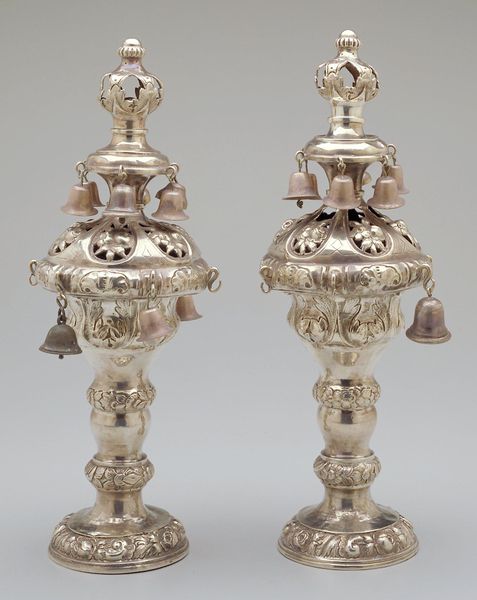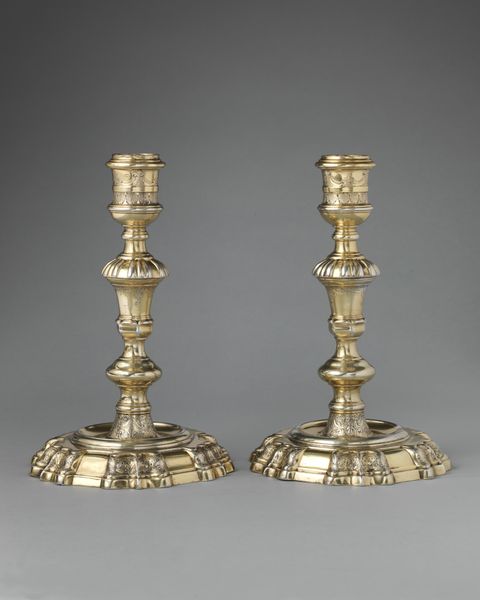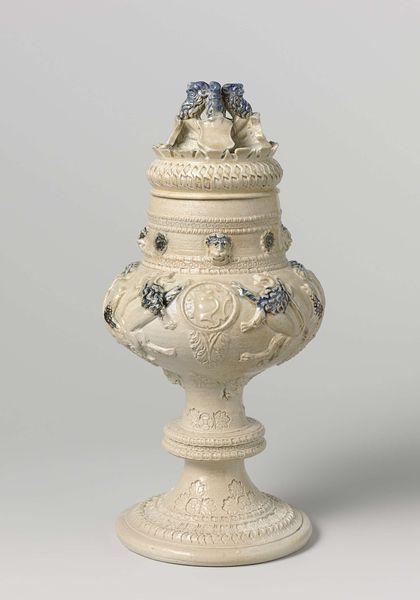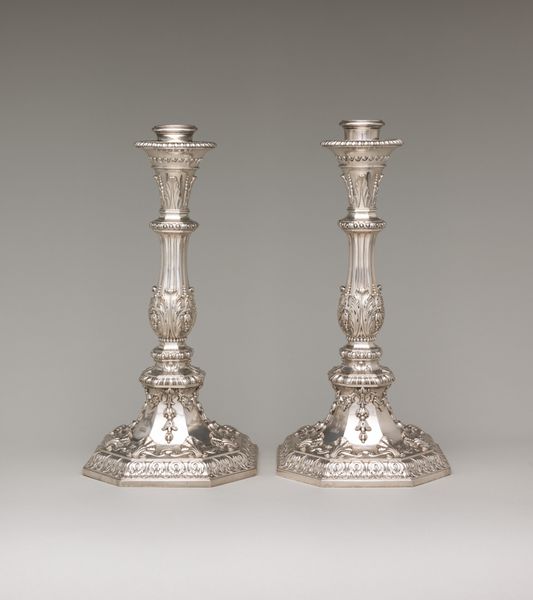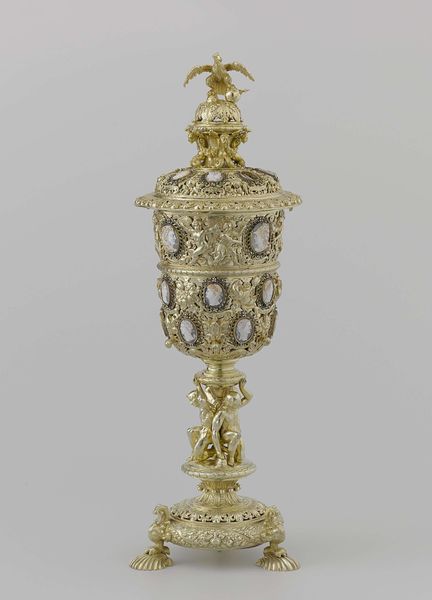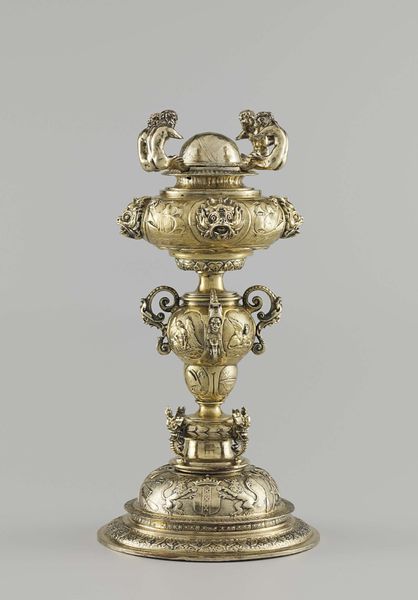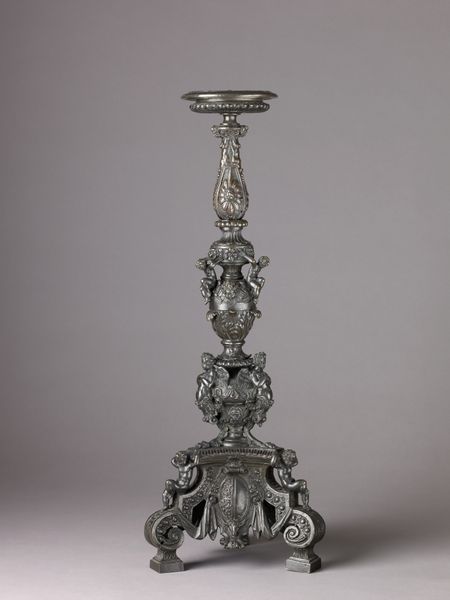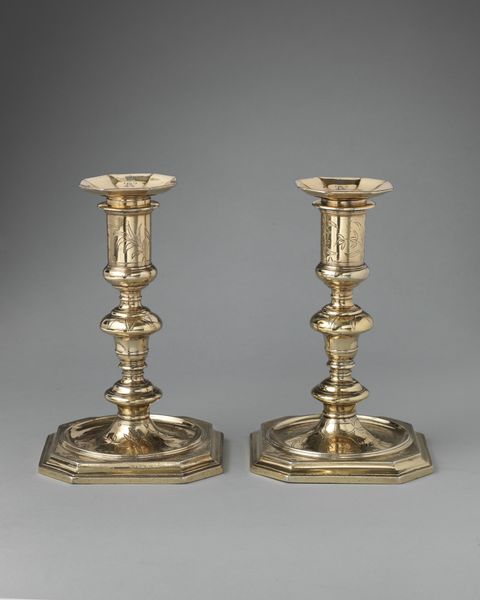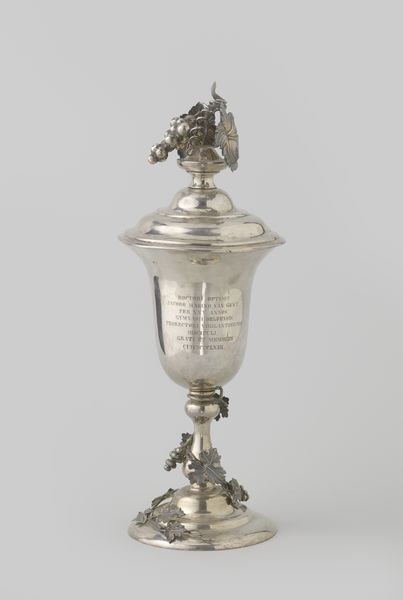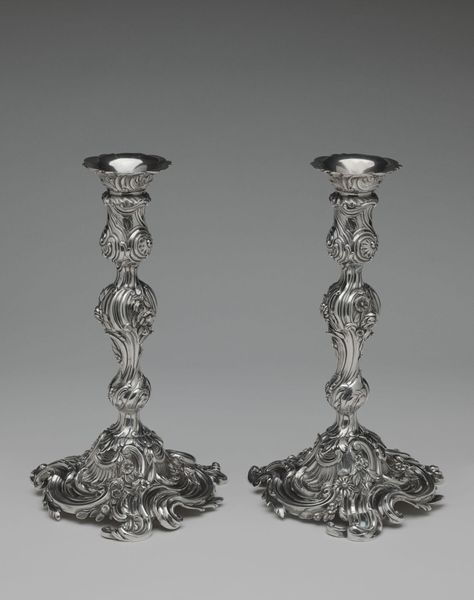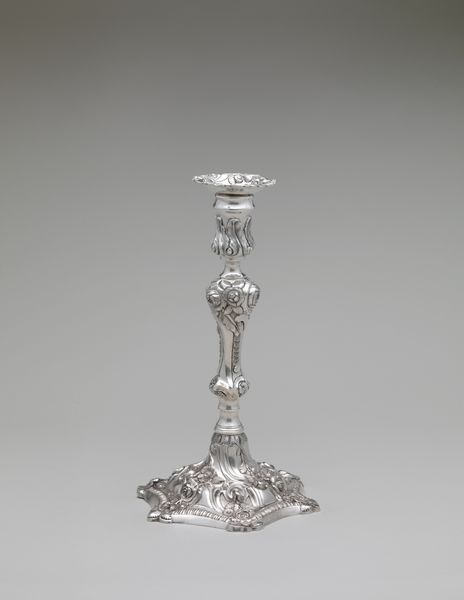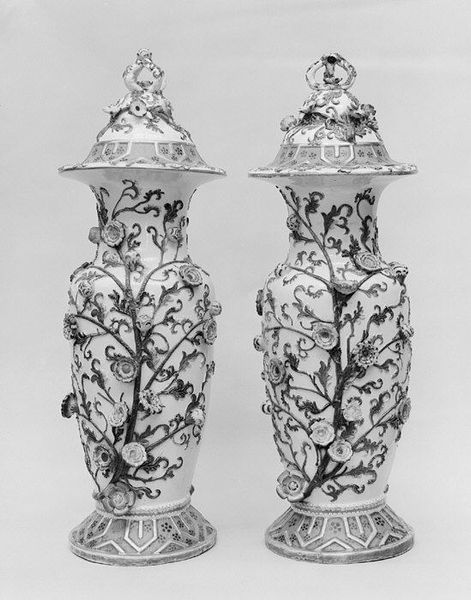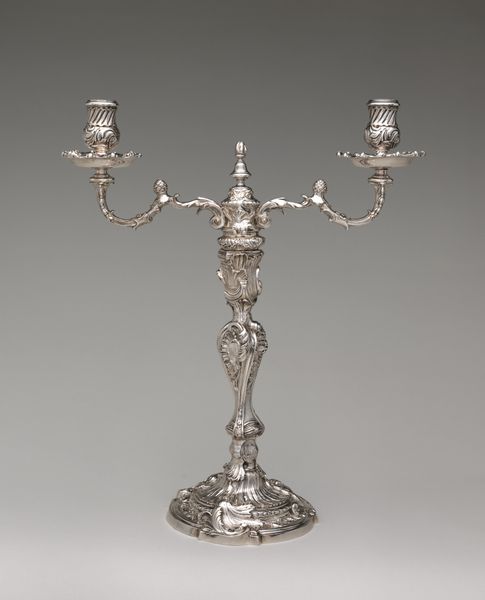
Dimensions: 14 3/8 x 6 1/4 x 4 7/8 in. (36.51 x 15.88 x 12.38 cm)
Copyright: Public Domain
Editor: This gleaming pair of silver sculptures, called Rimmonim, which are Torah finials, date back to the 19th century. Their decorative-art style with dangling bells gives me a feeling of ritual and ornate celebration. What stands out to you? Curator: The bells, yes, immediately draw our attention. What is the echo, the memory, they evoke? Bells often mark transitions – the start of a service, the end of mourning. They can ward off negative energy and call forth a divine presence. Note, too, how their placement – suspended, almost precariously – creates visual and aural tension, a delicate balance between reverence and vulnerability. Editor: Vulnerability? I hadn't thought of that. The silver and Baroque style felt very powerful. Curator: And power is present! But think about the purpose. The Torah, the sacred text, is itself vulnerable, isn't it? The Rimmonim protect, adorn. These are not mere ornaments. They speak to how we safeguard what is most precious, using beauty and even sound to amplify its significance. Look at the repeated floral motifs and the crown at the top – symbols of both earthly and spiritual sovereignty. Do you think the choice of silver is itself symbolic? Editor: Maybe to signify purity or value? Like emphasizing the importance of the scripture. Curator: Precisely! The imagery and material tell a layered story about faith, protection, and cultural memory, don't they? The Rimmonim aren't just beautiful objects, they resonate with a profound, enduring meaning. Editor: This has been so enlightening. Now I notice these silent bells are actually very eloquent storytellers, giving new meaning to visual symbols!
Comments
No comments
Be the first to comment and join the conversation on the ultimate creative platform.
